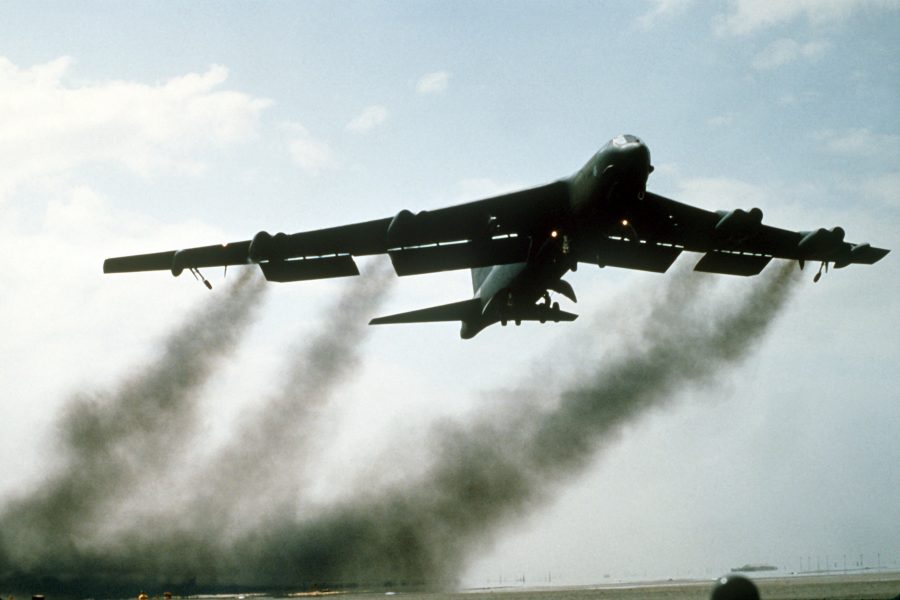In commemoration of the 30th Anniversary of Operation Desert Storm, Air Force Magazine will post a daily recollection from the six-week war, which expelled Iraq from occupied Kuwait. This first post includes several days of events. Most future posts will just include a single day.
Jan. 12, 1991: After intense debate, Congress clears the way for war against Iraq. The House votes 250-183 and the Senate votes 52-47 to authorize President George H.W. Bush to use military force to implement UN Resolution 678 to force Iraq to withdraw from Kuwait. The Senate votes 52-47 in favor of same authorization.
Jan. 13: UN Secretary General Javier Perez de Cuellar meets with Iraqi President Saddam Hussein and concludes there is little hope for peace.
Jan. 15:
- The deadline for Iraq’s withdrawal from Kuwait passes.
- The Defense Department announces the U.S. has 415,000 troops in the Gulf, opposed by 545,000 Iraqi troops.
Jan. 16:
- U.S. Central Command announces 425,000 U.S. troops are now in theater, supported by ground forces of 19 nations and naval efforts of 14 nations.
- First elements of U.S. Air Forces in Europe Joint Task Force Headquarters deploy from Ramstein Air Base, Germany, to Incirlik Air Base, Turkey, and prepare to establish USAF’s first wartime composite wing.
- Seven B-52Gs, launching from Barksdale Air Force Base, La., become the first aircraft to take off on Desert Storm combat missions; BUFFs of 596th Bomb Squadron, 2nd Bomb Wing, carry supersecret, never-before-used AGM-86C Conventional Air Launched Cruise Missiles.

Jan. 17:
- Coalition air forces launch Desert Storm at about 3 a.m. local time (7 p.m. Eastern Standard Time on Jan. 16). Barksdale B-52Gs arrive over Saudi Arabia, launch 35 CALCMs against high-value Iraqi targets, and return to Barksdale, completing a 14,000-mile, 35-hour nonstop mission—the longest strike mission in the history of aerial warfare.
- The coalition seeks to gain air superiority, destroy Iraq’s special weapons capability, and disrupt command and control.
- USAF Capt. Jon Kelk of the 33rd Tactical Fighter Wing at Eglin Air Force Base, Fla., shoots down an Iraqi MiG-29 at 3:10 a.m. in the first air-to-air victory.
- Coalition forces fly more than 750 attack sorties from land bases during the early morning and day, while the U.S. Navy launches 228 combat sorties from six carriers in the Red Sea and Arabian Gulf.
- Turkey approves USAF to use Incirlik and Turkish airspace to open northern front against Iraq. USAFE immediately deploys aircraft to Turkey.
Jan. 18:
- Iraq launches Scud missiles against Israel, Saudi Arabia.
- Secretary of Defense Dick Cheney activates Civil Reserve Air Fleet Stage 2, raising total draw from airlines to 79 passenger aircraft and 108 civilian cargo aircraft.
- Navy Lt. Jeffrey Zaun is captured after his A-6E is shot down.

Find our complete chronology of the Gulf War, starting with Iraq’s July 1990 invasion of Kuwait and running through Iraq’s April 1991 acceptance of peace terms, here.


